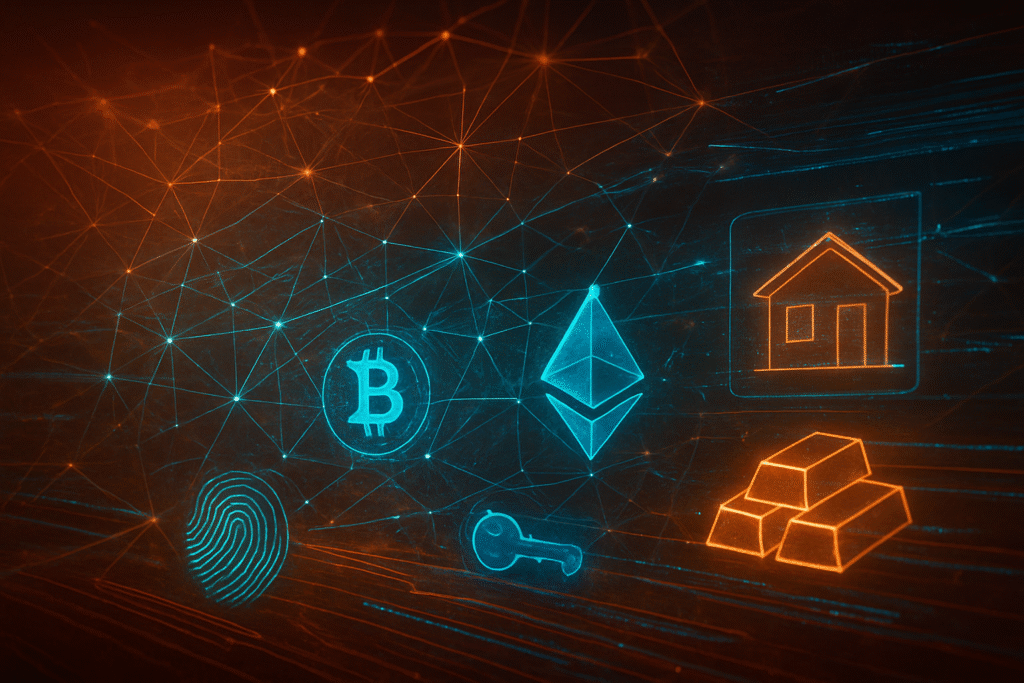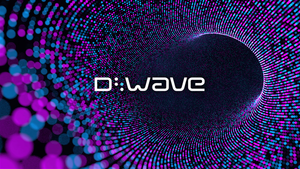
The cryptocurrency and blockchain ecosystem is on the cusp of a transformative era, driven by a wave of technological innovations that are rapidly addressing long-standing challenges in scalability, user experience, and real-world applicability. From the maturation of Layer 2 scaling solutions to the explosive growth of Real-World Asset (RWA) tokenization and the emergence of decentralized identity, these advancements are not merely incremental improvements but foundational shifts poised to catalyze the next wave of mainstream cryptocurrency adoption and expand blockchain's utility far beyond its initial scope. As of late 2024 and throughout 2025, these developments are transitioning from theoretical concepts to practical, widely implemented solutions, signaling a pivotal moment for the industry.
The immediate market reaction to these overarching technological trends has been one of cautious optimism and strategic investment. While not tied to a single event, the continuous rollout and adoption of these innovations have contributed to a more robust and confident market sentiment, attracting significant institutional capital and fostering a belief in the long-term viability of digital assets. This ongoing technological evolution is critical because it directly tackles the bottlenecks that have historically hindered widespread crypto adoption – high transaction costs, slow processing times, and a lack of tangible connections to the traditional economy. By solving these issues, blockchain technology is becoming more accessible, efficient, and integrated into daily life, laying the groundwork for unprecedented growth and utility.
Market Impact and Price Action
The market impact of these technological innovations, while not always manifesting as sharp, immediate price spikes tied to a single announcement, is profound and continuous. The steady progress in scalability, security, and utility builds fundamental value, attracting long-term investors and fostering a more mature market. Projects at the forefront of these innovations often see their native tokens benefit from increased utility and adoption. For instance, tokens associated with leading Layer 2 solutions like Arbitrum (ARB) and Optimism (OP) have demonstrated resilience and growth as their ecosystems expand, driven by lower transaction costs and faster speeds on their networks. Similarly, the growing institutional interest in tokenized RWAs has created a new demand vector, potentially stabilizing and increasing the valuation of underlying blockchain infrastructure and related DeFi protocols.
Trading volumes and liquidity are steadily increasing across the broader crypto market, reflecting growing confidence stemming from these technological advancements. As blockchain becomes more efficient and versatile, more capital flows into the ecosystem, not just from retail participants but increasingly from institutional players. Major financial institutions like JPMorgan Chase (NYSE: JPM), which has processed over $1 billion in daily transactions on its Onyx blockchain initiative, and BlackRock (NYSE: BLK), Franklin Templeton (NYSE: BEN), and HSBC (NYSE: HSBC), all launching tokenized funds and money market instruments in 2025, are validating the technology's potential. This institutional embrace, directly facilitated by innovations like RWA tokenization, contributes to deeper liquidity pools and reduces overall market volatility by bringing in more sophisticated, long-term capital.
Technical analysis reveals a shifting landscape where fundamental technological progress acts as a powerful underlying support. While macroeconomic factors still play a significant role, the continuous improvement in blockchain's core capabilities provides a strong bullish narrative. Key support levels for major cryptocurrencies like Bitcoin (BTC) and Ethereum (ETH) are increasingly bolstered by the expanding utility and adoption driven by these innovations. The comparison to past cycles suggests that while speculative bubbles may still occur, the current wave of innovation is building a more sustainable foundation, implying that future market corrections might be less severe for projects with strong technological backing and real-world utility. This period is less about speculative fervor and more about the quiet, consistent accumulation of value based on tangible progress.
The ongoing evolution of Layer 2 solutions, particularly the maturation and interoperability of Zero-Knowledge (ZK) Rollups (e.g., StarkNet, zkSync), is a critical development. These solutions offer superior security and efficiency compared to earlier optimistic rollups, reducing withdrawal times and enhancing user experience. This continuous improvement in scaling infrastructure directly translates into a more functional and appealing environment for decentralized applications (dApps), leading to increased user engagement and, consequently, a positive impact on the market capitalization of the underlying Layer 1s and their respective Layer 2 tokens.
Community and Ecosystem Response
The crypto community's response to these technological innovations has been overwhelmingly positive, marked by enthusiastic discussions across social media platforms like X (formerly Twitter) and Reddit. The sentiment largely reflects excitement over the tangible progress being made in solving long-standing blockchain challenges. Developers are actively building on new Layer 2 and Layer 3 solutions, experimenting with RWA tokenization, and integrating decentralized identity protocols, leading to a vibrant ecosystem of innovation. Discussions frequently highlight the practical implications of these advancements, such as significantly reduced gas fees on networks utilizing rollups, faster transaction finality, and the potential for new, complex dApps that were previously unfeasible due to scalability constraints.
Crypto influencers and thought leaders are playing a crucial role in disseminating information and shaping public perception. Many are actively championing the adoption of these new technologies, emphasizing their potential to onboard the next billion users into Web3. There's a strong narrative building around the idea that blockchain is finally "growing up," moving beyond speculative assets to become a foundational technology for a new internet. Influencers often provide detailed breakdowns of how ZK-Rollups work, the benefits of tokenizing various assets, and the privacy enhancements offered by Decentralized Identity (DID), helping to educate a broader audience and accelerate understanding and adoption.
The effects on related DeFi protocols, NFT projects, and Web3 applications are profound. DeFi protocols are leveraging Layer 2 solutions to offer more cost-effective and faster transactions, making lending, borrowing, and trading more accessible to a wider user base. This has led to an explosion of new DeFi primitives and increased Total Value Locked (TVL) on Layer 2 networks. NFT projects are benefiting from lower minting and trading fees, fostering a more active and inclusive marketplace for digital collectibles and digital art. Furthermore, the integration of Decentralized Identity (DID) is paving the way for more secure and privacy-preserving Web3 applications, enhancing user trust and enabling new use cases in gaming, social media, and governance. The broader crypto Twitter and Reddit sentiment indicates a strong belief that these innovations are essential for the long-term success and mainstream acceptance of the decentralized web.
What's Next for Crypto
The short-term implications for the crypto market are characterized by continued innovation and the consolidation of leading technological solutions. Projects that successfully implement and scale these advancements – particularly in Layer 2 scaling, RWA tokenization, and decentralized identity – are likely to attract significant investment and user adoption. We can expect a "flight to quality" as investors gravitate towards ecosystems demonstrating tangible utility and robust technological foundations. The ongoing competition among Layer 2 solutions will likely lead to further optimization, with a strong focus on interoperability and seamless user experience across different networks.
In the long term, these innovations are poised to fundamentally reshape the crypto market and its role in the global economy. The ability to efficiently scale transactions and securely represent real-world assets on-chain opens up vast new markets, bridging traditional finance with decentralized finance. This will lead to a significant increase in institutional participation and the integration of blockchain into mainstream financial products and services. The widespread adoption of decentralized identity will enhance privacy and security, making Web3 interactions safer and more compliant, thereby accelerating mass adoption across various sectors.
Potential catalysts to watch include further regulatory clarity regarding tokenized securities and digital identity standards, which could unlock even greater institutional capital. Breakthroughs in Layer 3 solutions, offering highly customized and application-specific blockchain environments, could also drive new waves of innovation in gaming, social media, and enterprise solutions. Strategic considerations for projects involve prioritizing interoperability, user experience, and robust security measures. Investors should focus on projects with strong development teams, clear roadmaps for implementing these innovations, and demonstrated traction in real-world use cases. Possible scenarios range from a steady, organic growth driven by utility to a more rapid acceleration if regulatory frameworks globally align to support these new technologies, with the latter becoming increasingly likely as governments recognize the economic potential.
Bottom Line
For crypto investors and enthusiasts, the key takeaway is that the blockchain space is rapidly maturing, moving beyond speculative hype towards a future built on practical utility and robust technology. The ongoing advancements in Layer 2 scaling, Real-World Asset (RWA) tokenization, and Decentralized Identity (DID) are not just buzzwords; they are fundamental shifts that are solving critical problems and expanding the addressable market for blockchain technology. These innovations make cryptocurrencies more usable, accessible, and integrated into the global economy, laying a solid foundation for sustainable growth.
The long-term significance of these developments cannot be overstated. By improving scalability, reducing costs, and enabling the secure representation of real-world value on-chain, blockchain is poised to become a core infrastructure layer for global finance, supply chains, and digital identity. The tokenization of RWAs, in particular, represents a monumental shift, potentially unlocking trillions of dollars in illiquid assets and making them accessible to a global investor base. Decentralized identity solutions empower individuals with greater control over their data, fostering trust and privacy in an increasingly digital world.
Ultimately, these innovations mean that crypto adoption is set to accelerate significantly. As transaction costs fall and speeds increase, and as more tangible assets and identities are brought onto the blockchain, the friction points for mainstream users and institutions diminish. We are witnessing the evolution of blockchain from a niche technology to a ubiquitous infrastructure. Important metrics to monitor include the Total Value Locked (TVL) on Layer 2 networks, the growth in market capitalization of tokenized RWAs, the number of users adopting DID solutions, and the ongoing regulatory developments globally. Key events like major Layer 2 upgrades, institutional launches of tokenized products, and governmental initiatives exploring blockchain for public services will be crucial indicators of this trajectory.
This article is for informational purposes only and does not constitute financial or investment advice. Cryptocurrency investments carry significant risk.






